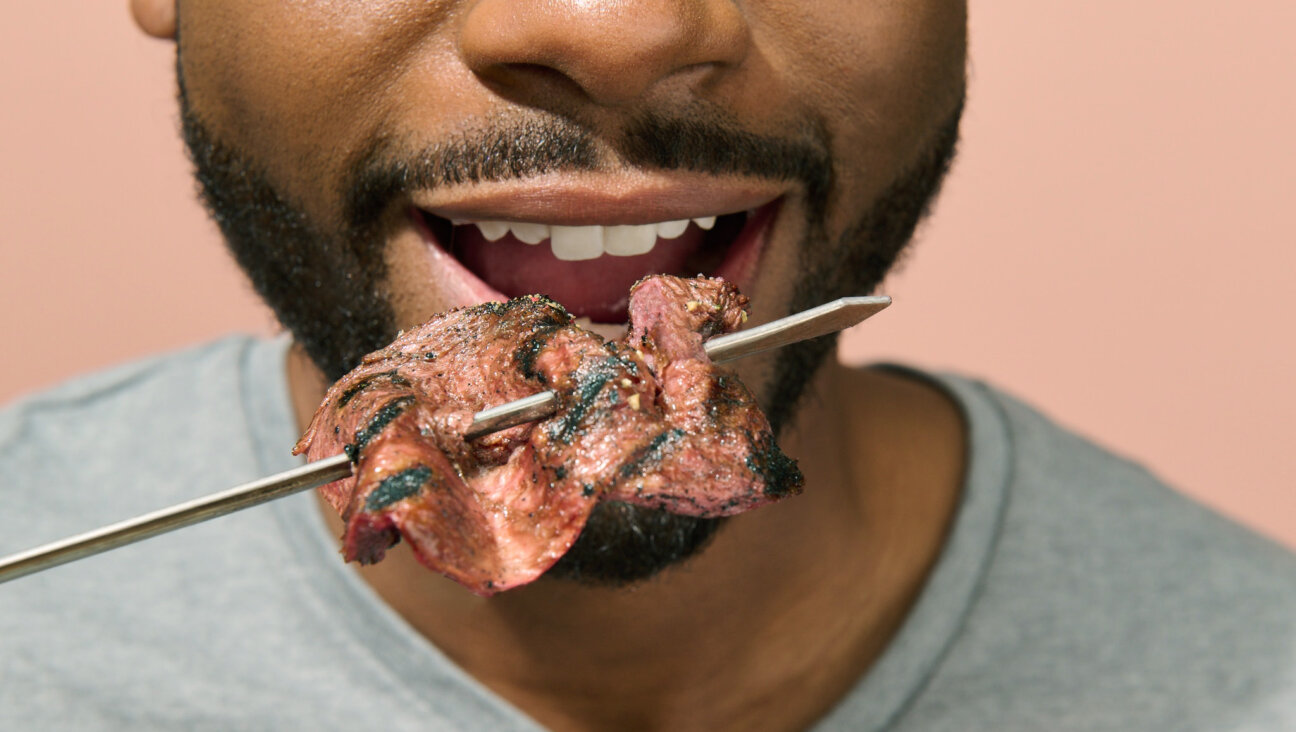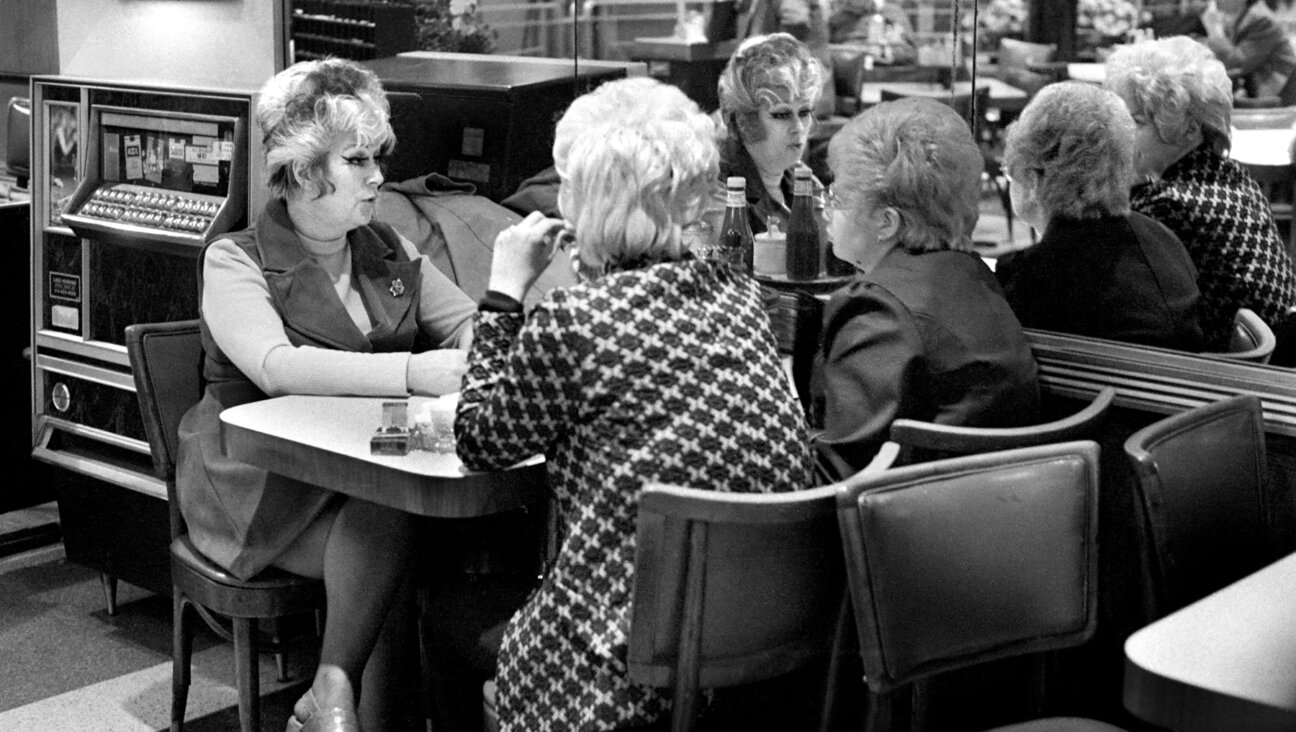Shabbat Wine Pairing 101

Image by iStock
While wine is a crucial element of Jewish religious practice, kosher consumers are not known for their expertise in vino. The stereotype is that Jews prefer sweet wines to the more sophisticated dry wines favored by oenophiles. And, according to Beckey Richards, sommelier at Herzog Wine Cellars in Oxnard, Calif., there’s some truth to that.
“I was surprised when I started working here to see the demand for sweeter wines,” she said. Herzog Special Reserve (the company’s higher-end label, which includes more aged wines) sells three versions of late harvest wines, which are made with sweeter grapes — a Chenin Blanc, Zinfandel and Riesling. Usually, wineries will make just one late harvest variety.
“But I do think there’s a lot of interest in experimenting more,” Richards said. “We sell a Chardonnay and a Cabernet a little hint of sweetness. I call them ‘training wheel wines.’ They get people to transition from sweet into drier wines.”
Still, one of the biggest challenges for those just learning about wine is figuring out how to pair it well with food. We asked Richards to give us a cheat sheet for wine pairing.
As a rule of thumb, she said, regional varietals (grapes) tend to pair well with foods from the same region. So Italian wines pair very well with Italian food; French wines with French food.
For a one-size-fits-all wine that complements different courses — like a Shabbat meal — Richards suggests the versatile Pinot Noir, a light to medium-bodied red “often described as food’s favorite wine,” she says. Pinot Noir from California tends to be medium-bodied, and those from Burgundy have more earthiness to them. Those tend to complement both meat and vegetarian courses (specifically mushroom-based dishes).
When she’s headed to a dinner party and doesn’t know what the hosts are serving, Richards brings either a Pinot Noir or a sparkling wine. “Depending on my budget, I may go with a Spanish Cava or an Italian Prosecco, or if I’m splurging, Champagne. Sparkling wines have nice acidity and are good palate cleansers,” she said.
But when it comes to pairing specific dishes with wines, she tends to pair the wine to the protein being served. You want to “match the intensity of the wine with the intensity of the dish,” she said. So if you’re having a heavy, flavorful dish, you’ll want a bold wine (see some suggestions below). “If you have a light-bodied white wine with a steak, the meat will overpower the wine, and you won’t be able to taste the wine.”
Richards said that the rule dictating that chicken and fish should be served with white wine, and beef and lamb with red is a good guideline — but flexibility is key. “You can certainly try different things,” she said. Richards recently paired a sea bass with a port wine reduction sauce with a bottle of red wine, and she’ll often pair salmon with a light-bodied red like Beaujolais. “You want to pay attention to the sauces and the spices, too,” she said. Heavy sauces should get bold wines.
Here’s Richards’ cheat sheet for wine pairings to suit a Shabbat or holiday meal. Print it out and keep it handy.
Appetizers
Vegetable-based soups — Sauvignon Blanc. “In general, Sav Blanc has a nice acidity and grasiness that complements vegetables,” Richards said.
Creamy soups — An oaky Chardonnay
Cold salad — Sauvignon Blanc, Grüner Veltliner, dry Riesling, Pinot Grigio (also called Pinot Gris if it’s from France). “Sauvignon Blanc has a nice acidity which goes well with salad dressings made of vinegar and oil,” she said.
Smoked fish — A dry Riesling
Meat Entrees
Chicken — Pinor Noir, Burgundy, Grenache-Syrah-Mourvèdre blend
Beef — Syrah (or Shiraz), Grenache/Syrah blend
Brisket — Syrah (or Shiraz), Zinfadel
Lamb — Syrah (or Shiraz), Petite Syrah. “Lamb is gamey, big and bold. Syrah is generally also big and bold,” she said.
Dessert
Chocolate — Late harvest Zinfandel, Port. “The nice thing with the sweet wines is that they mellow out the sweetness of the dessert. It takes it down a notch.”
Fruit – Go with other late harvest white wines, like Rieslings and Viogniers. “The late harvest make it sweeter. The grapes are more ripe and have more sugar. They can be desserts by themselves
















